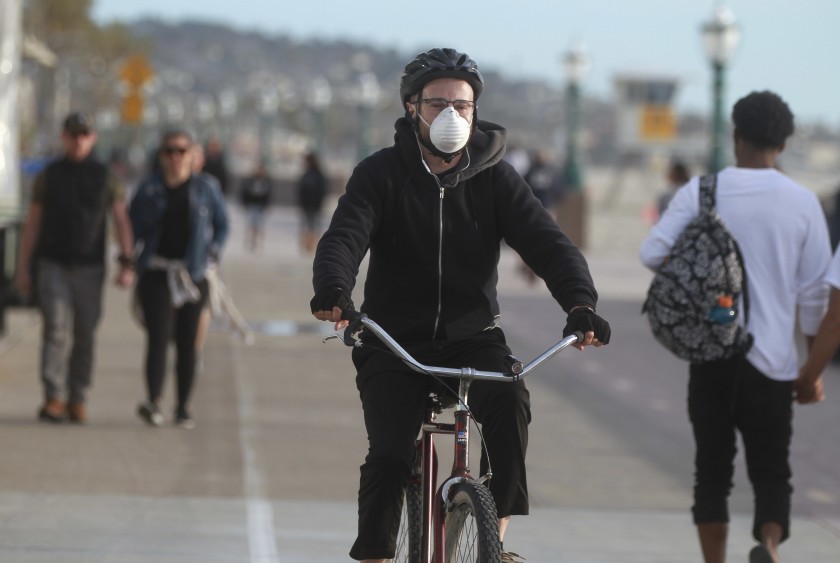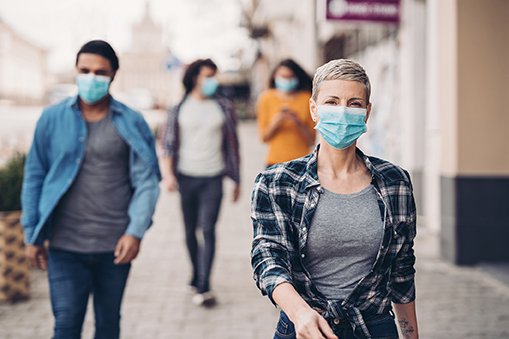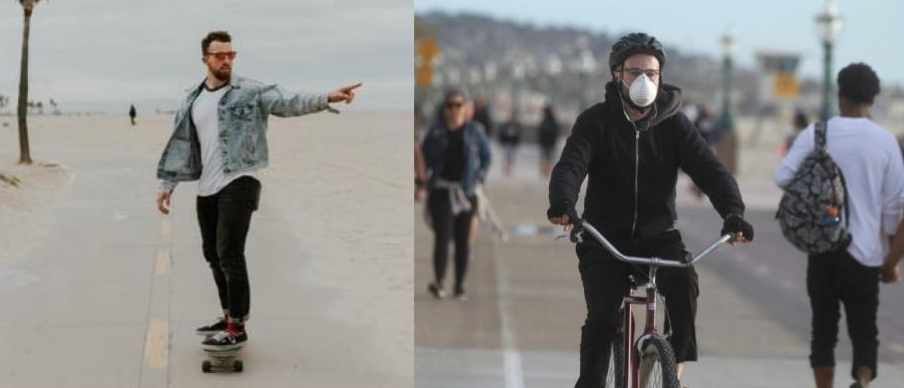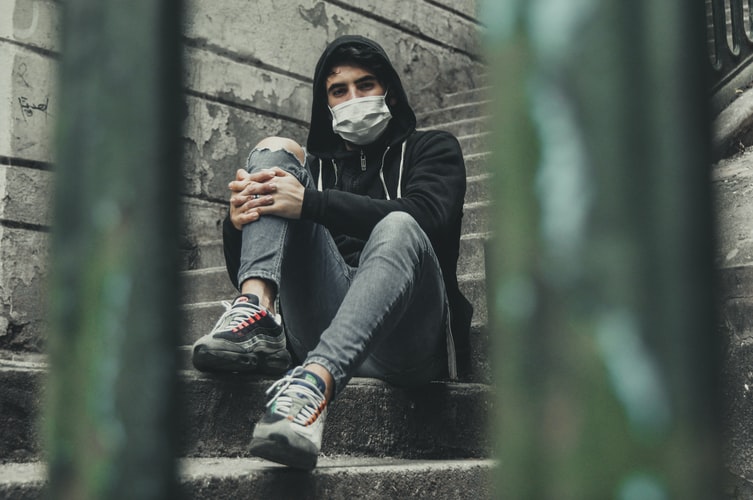Does wearing masks outdoors make sense? Just how great is the danger of contracting the coronavirus in open-air settings?


The following written content from Kathrin Wesolowski
DW spoke to experts to find out.
The chances of becoming infected with the virus are far slimmer outdoors than indoors. This applies to the original coronavirus as well as to its mutants. This is due to aerosols, which are tiny particles floating in the atmosphere, that play a key role in the spread of the virus. Experts say aerosols pose a smaller risk outdoors.
“This has to do with air circulation being far more pronounced outdoors,” says Nico Mutters, who heads the Institute for Hygiene and Public Health at Bonn University Hospital. “The winds have a quick diluting effect.” Birgit Wehner, an aerosols researcher at the Leibniz Institute for Tropospheric Research, says the tiny particles we exhale dry and dissipate far quicker outdoors. However, a paper by the Aerosols Association — signed by Wehner and others — states that infections still cannot be ruled out when individuals gather in large groups without keeping a sufficient distance.

This means keeping a safe distance of 1.5 to 2 meters (about 5 to 6.5 feet) from others remains essential, even outdoors. “If we do not keep this distance, looking at each other face-to-face to talk, sing, scream and spit, then we are at risk not of aerogene [airborne] infections, but of droplet infection,” German virologist Alexander Kekule tells DW. Kekule is known as a critic of government measures to contain the virus outbreak. He says we should simply deal the virus, without imposing great restrictions on everyday life.
Kekule says observing a safe distance is also key to prevent contracting coronavirus mutants. “These mutants do not fly further [than other coronavirus variants], that’s important to note,” he says. Kekule says the mutants are somewhat more infectious but says this has no relevance for counter measures. He says it is recommended to avoid kissing and hugging others. He says briefly passing someone during a regular outdoor activity poses very little danger of infection. Studies have shown that the risk of outdoor infection is very small. One study from China says that, of 7,324 reported infections, only one was traced back to an open-air setting. Germany’s Robert Koch Institute (RKI) echoes this view, stating on its website that very few infections occur outdoors.
Can wind held spread the virus?
“The windier it is, the more our cloud of aerosols is dispersed, of course,” says aerosol researcher and physicist Gerhard Scheuch. Images of groups of people sitting outside have been shared on social media lately. The risk that one group may infect another, however, is very low, says Birgit Wehner — provided the minimum safety distance is observed, of course.

Scheuch deems this outdoor scenario “absolutely safe.” He tells DW that our “body heat alone generates a kind of airflow, usually upwards, like a chimney.” Normally, a person’s body temperature is about 37 degrees Celsius, exceeding the ambient temperature. “This causes warm air to rise, and that make the aerosol cloud rise as well.”
An Iranian study also found wind plays no role in furthering coronavirus infections.
Does it make a difference whether it is warm or cold outside?
There exists no conclusive scientific answer to this question. American scientists have examined cases of coronavirus infections in warm, cold, dry and humid regions in China, detecting no link between the climate and the number of infections.
One Austrian study, however, found that UV light destroys the virus. Nevertheless, the authors say that “UV light presumably only has a minor impact on direct human-to-human transmission,” as infections can occur within mere minutes.
There was no agreement on this question among experts interviewed by DW. Nico Mutters said it is not possible to say that warmer seasons pose a lower infection risk than cold ones. “While there is greater UV radiation in summer, snow reflecting light means UV radiation is even higher when you are skiing in winter,” says Mutters. “As you can see, whether it is warm or cold does not automatically have a strong impact on the risk of infection.” Moreover, Mutter says, infection spikes have been recorded both in warm and cold parts of the world.
Virologist Alexander Kekule disagrees. He says people in warm and cold countries have primarily contracted the virus indoors. He says that people in warm regions “tend to spend time indoors, with air conditioning and fans.”

Are athletes more contagious than others?
Experts say keeping a minimum safe distance from athletes is sufficient, even though they tend to inhale and exhale deeper, and thus emit more aerosols.
“If a jogger briefly passes me, there is very little risk,” aerosol researcher Birgit Wehner tells DW. Gerhard Scheuch concurs. He says an infection risk only exists when individuals stand together closely for several minutes. That is why he even deems contact sports like football and basketball safe. “But there is a problem if individuals share locker rooms to get changed, or use shared a toilet — those are risky areas, that must be well ventilated.” This aside, he says, one may consider lifting outdoors restrictions, provided safety distances are heeded.
A Dutch study published last year, however, found that one should keep an even bigger distance from athletes. The authors say one should keep a 20-meter distance from cyclists. The research has attracted criticism, meanwhile, for having been carried out in a wind tunnel, instead of a real-life setting. Read more from DW





